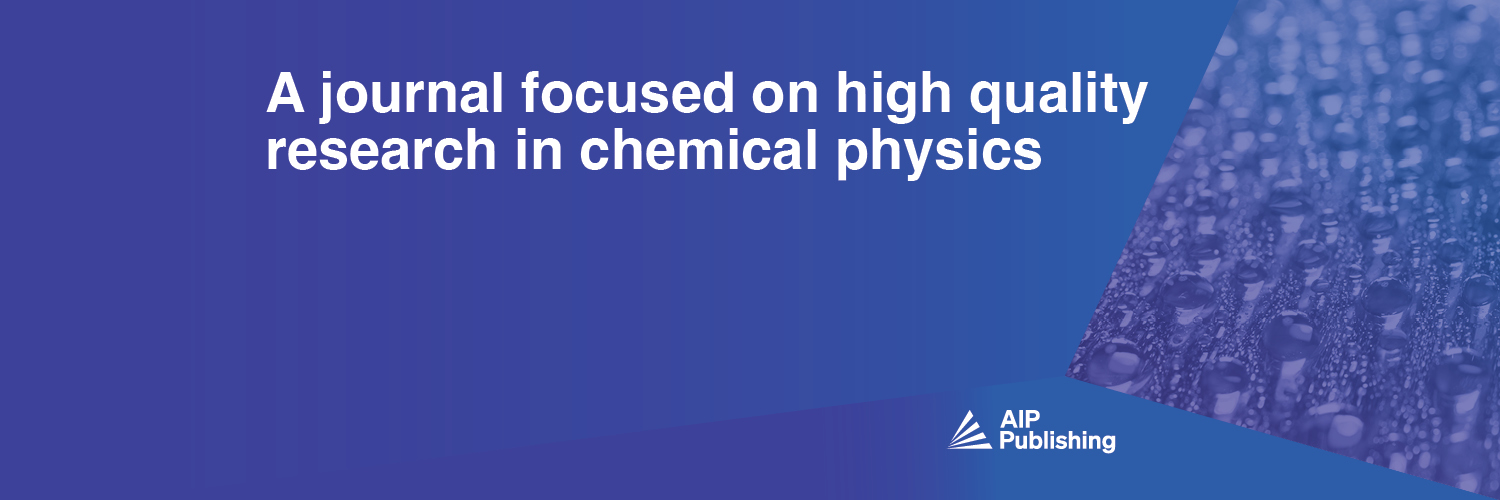
Chemical Physics Reviews
@ChemPhysRev
CPR is a new journal featuring reviews and original research covering all areas of chemical physics. Published by @AIP_Publishing.
Chiral metal halide perovskites have rapidly advanced for chiral-induced spin selectivity. This article reviews the structural asymmetry, theories, experiments and state-of-the-art spin-LEDs. Learn more 👇 aippub.org/4d6I6pF
We’re continuing the conversation — in a new place. AIP Publishing is now posting on Bluesky: @ aip-publishing.bsky.social Follow us there for the latest research🧪
We’re continuing the conversation — in a new place. AIP Publishing is now posting on Bluesky: @ aip-publishing.bsky.social Follow us there for the latest research🧪
Ultrafast Photochemistry of Gas-Phase Transition Metal Carbonyls. Learn more 👇 aippub.org/3FFvCcg
Reminder ❗ This Special Topic is still open for submissions! Submit by January 1, 2026. Learn more 👇 aippub.org/4aTXm7Y
The construction of quantitative relationships between polymer structure and properties through machine learning is crucial for the design and preparation of high-performance polymer materials. Learn more 👇 aippub.org/4cYrJes
This review maps the landscape of excited-state methods: comparing performance, clarifying limitations, and guiding method selection for diverse molecular systems. Learn more 👇 aippub.org/4iHaXSl
This review introduces computational diabatization schemes for the Dexter type excitation energy transfer coupling and their applications for photosynthetic phenomena such as photoprotection. Learn more 👇 aippub.org/44k2IZ5
Chemical Physics Reviews Editor-in-Chief @FNCastellano is presenting tomorrow at #ACSSpring2025! Learn more 👇 aippub.org/4bYgAd8

With the relationships between all the most popular polariton Hamiltonians clearly derived in one place, cavity polariton theory becomes more accessible for both new and established researchers. @HuoGroup Learn more 👇 aippub.org/4kDY8L0
A modern overview of spatial techniques for machine learning of slow collective variables and enhanced sampling in molecular dynamics simulations. @tugceegokdemir @JakubRydzewski Learn more 👇 aippub.org/3XsQxEQ
In-operando SFG spectroscopy reveals stable CTAB surfactant monolayers across a wide potential range at electrochemical interfaces, providing new insights for interface engineering. Learn more 👇 aippub.org/4bst8sW
We review theory of kernel regressions & applications in materials informatics, highlighting relations between different flavors of the method and other ML methods. Kernel designs are also reviewed. @sciencetokyo_en Learn more 👇 aippub.org/4kroQq0
Exploring the potential of machine learning to predict material properties from chemical composition, with a focus on physics-guided ML for accurate, interpretable predictions in materials science. aippub.org/3En7N7O @MoALGq
Focusing on molecular materials, we outline the theoretical background of exchange coupling and review available methods for its characterization in the electronic ground and excited states aippub.org/3WBRsCD @sabine_richert, @UniFreiburg
We discuss how 2D electronic spectroscopy can be applied to exciton-polaritons to reveal previously hidden information about the photophysics of energy relaxation in these hybrid photonic materials. @minjung_son @BUChemistry Learn more 👇 aippub.org/4iYjBgU
Modeling the Lithium dendrite formation sites/scenarios in the solid electrolyte interphase – a multi-component structure in Li-ion batteries, using high-throughput DFT-NEB and ML techniques. @UStateScience Learn more 👇 aippub.org/495EDp3
Incorporating quantum nuclear delocalization via the CNEO-QM/MM framework reveals significant differences in hydrogen bond geometries and dynamics compared to conventional QM/MM. @yangtheorychem @TCI_UW_Madison Learn more 👇 aippub.org/3OqPznY
We review the different approaches to the modelling of the kinetics of exciton decay in materials that emit via thermally activated delayed fluorescence. @ezc_group @StAndrewsOSC @chemguy_eli @StAndrewsChem Learn more 👇 aippub.org/4gI0Blx
Publishing #OpenAccess enhances the visibility and impact of research. Our author select program allows researchers to publish OA across our whole portfolio. Read one of the most downloaded articles from Chemical Physics Reviews as we celebrate #OAWeek! 👉 aippub.org/3YjBJZ7